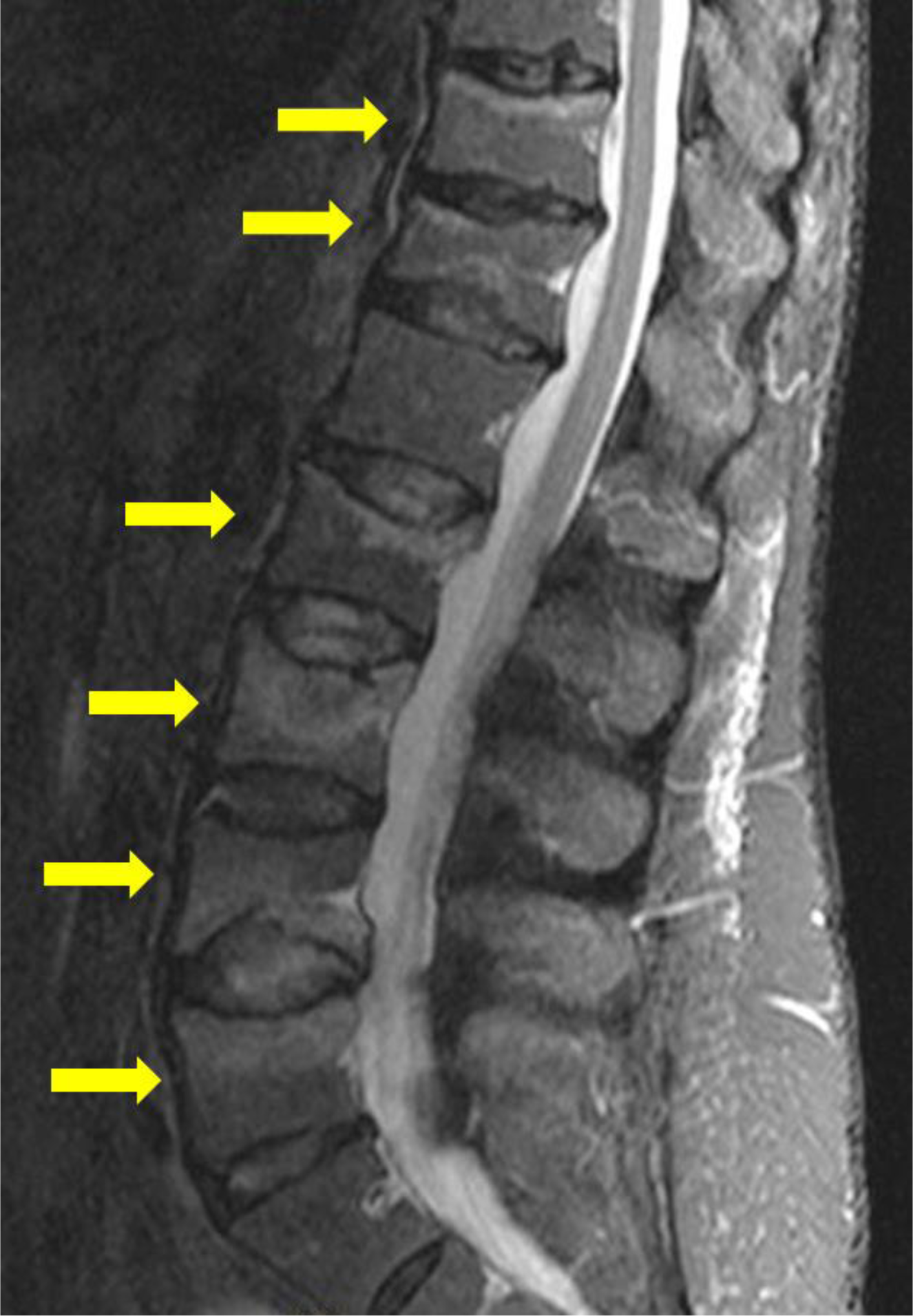

Background: Denosumab, a monoclonal antibody against RANKL, is an effective treatment for osteoporosis. Discontinuation of denosumab has been shown to lead in multiple vertebral fractures in some patients due to a severe acceleration of bone resorption (rebound-associated vertebral fractures-RAVFs). Limited data published during the last 2 years highlighted this issue.
Objectives: The aim of this case series is to describe features of the denosumab-associated RAVFs and the characteristics of these patients.
Methods: Patients from our outpatient rheumatology clinic who were diagnosed with recent vertebral fractures after denosumab discontinuation from January 2019 to December 2019 were included. Diagnosis was based on x-ray and/or magnetic resonance imaging (MRI) of thoracic (T) or lumbar (L) spine. All cases were the result of reduced compliance of the patients to the treatment regimen. A baseline x-ray examination was available in all patients included and was compared in order to exclude prevalent osteoporotic fractures. Demographic and clinical parameters were recorded.
Results: Nine patients (8 females) with a mean±SD age of 71.3±11.9 years were included (
Characteristics of RAVFs and patients affected. L: Lumbar, T: Thoracic, SD: Standard Deviation
| Females (%) | 88.9% |
| Age (years) (mean±SD) | 71.3±11.9 |
| Affected vertebras (median, range) | 4, 1-6 |
| Treatment duration (mean±SD) (months) | 54.0±30.1 |
| Time after last injection (mean±SD) (months) | 8.8±2.4 |
| Vertebral fracture site | 1 3 |
| T10 T11 T12 | 2 |
| L1 | 5 |
| L2 | 5 |
| L3 | 8 |
| L4 | 5 |
| L5 | 5 |
| Patients with prevalent osteoporotic fractures (%) | 33.3 |
| Patients receiving drugs affecting bone metabolism (%) | 44.4 |
| Patients with previous treatment with bisphosphonates (%) | 33.3 |
Multiple vertebral fractures (yellow arrows - T11, T12, L2-L5) in a patient 7.5 months after the last denosumab injection. T: thoracic, L: Lumbar

Conclusion: Denosumab-associated RAVFs usually occur within 7-12 months after the last denosumab injection and affect multiple vertebras. Most cases are associated with long-term (>2 years) denosumab administration without previous treatment with bisphosphonates. Rheumatologists should be alert of this complication since the reported compliance in patients under denosumab treatment is only 46% (1) and the expected incidence of RAVFs after denosumab discontinuation has been reported to be 10% (2).
REFERENCES:
[1]Durden E, Pinto L, Lopez-Gonzalez L, Juneau P, Barron R. Two-year persistence and compliance with osteoporosis therapies among postmenopausal women in a commercially insured population in the United States. Arch Osteoporos. 2017 Dec;12(1):22.
[2]McClung MR, Wagman RB, Miller PD, Wang A, Lewiecki EM. Observations following discontinuation of long-term denosumab therapy. Osteoporos Int. 2017 May;28(5):1723-1732.
Disclosure of Interests: None declared